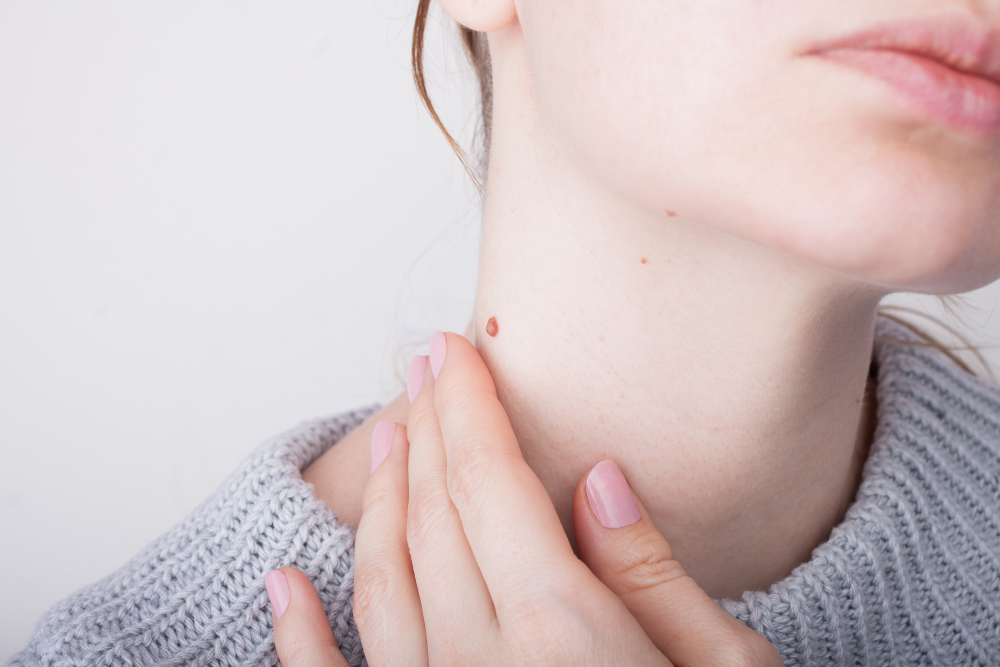
Skin cancer is one of the most common cancers in humans. One of its primary causes is too much exposure to sunlight—skin exposed to the sun for too long is more prone to developing skin cancer. That makes the face one of the most likely locations for cancer. Medical professionals classify skin cancer into three types:
Basal cell carcinoma
Squamous cell carcinoma
Melanoma
These cancers can range in severity. Some are minor, superficial growths treatable with topical or cryotherapy. Others are large, aggressive tumors needing extensive surgical removal. In some cases, chemotherapy or radiation may be necessary. Monitoring and evaluating any suspicious skin lesions or ulcerations is critical.
Plastic Surgery and Skin Cancer
Dermatologists can treat many skin cancers or precancerous lesions with topical or noninvasive methods. However, more advanced cancers may need surgical removal. That can be especially difficult when the tumor is on the face. That is because scars may be more visible and have a more significant impact on facial appearance.
In such cases, plastic surgery may be necessary to help minimize scarring and maintain a natural appearance. Collaborating with a healthcare team to develop a treatment plan that considers the medical and cosmetic aspects of skin cancer surgery on the face is best.
Mohs Surgery
Mohs micrographic surgery, also known as Mohs surgery, is a specialized surgical technique used to treat skin cancer. It is highly accurate and effectively removes skin cancer while preserving healthy tissue.
During surgery, the surgeon removes thin layers of cancer-containing skin one at a time. He/she examines each layer under a microscope until there is no more cancerous tissue. That enables the surgeon to precisely identify and remove all cancerous cells while preserving as much healthy tissue as possible.
This procedure helps treat the two most common types of skin cancer—basal cell and squamous cell carcinomas. It is an effective treatment for skin cancers in areas where healthy tissue preservation is vital, such as the face, hands, or feet. It can also treat large, aggressive skin cancers that recur after previous treatment.
The Goals of Skin Cancer Reconstruction
Dealing with skin cancer can be difficult, especially when it affects the face. That is because the face is often the most prominent feature of an individual's appearance. Unfortunately, it is not possible to fully reverse the damage caused by skin cancer. Any surgery to remove it may result in scarring.
Reconstructive surgery after skin cancer treatment can help restore your facial form and function to as close to normal as possible. That can help minimize the long-term effects of a cured cancer. It is essential since it can significantly impact your appearance and sense of identity.
A Team Approach to Recovery
A team approach to skin cancer recovery can include oncologists, dermatologists, plastic surgeons, and other specialists working together. Each team member contributes their expertise and experience. That allows for a more comprehensive and holistic approach to treatment and recovery.
By working with a team of healthcare professionals, you can minimize skin cancer's impact on your appearance and quality of life.
For more information on plastic surgery and skin cancer, visit Gupta Plastic Surgery at our San Diego or Encinitas, California office. Call (858) 408-6100 to schedule an appointment today.












